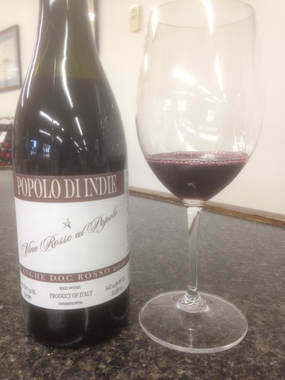 One of the difficult problems for consumers and wineries that are pursuing the more 'natural' styles of winemaking is the cost of the wines. It's hard, expensive work to make wine where you ultimately intervene as little as possible, usually smaller batches that require a lot more hand care from birth to bottle. One way to help mitigate the costs for some wineries is to lower the cost of grapes used; it's one of the main reason each wine's story starts with 'a forgotten vineyards once in disrepair' or 'this grape have been overlooked by many'. For this wine, importer Indie Wines uses their relationship with their wineries to find fruit to make their own bottlings. Using lots the wineries may not be using or sourcing from other trusted growers, Indie is able to make a more affordable wine that does not undercut their other producers; in fact, this wine 'of the people' helps to introduce the public to the style by being done by the glass at restaurants or for an everyday drinker, drawing them in to see what else this wine world has to offer. Built from the classic Piedmont blend of Nebbiolo, Dolcetto, and Barbera, the wine pops from the glass with immediate aromas of dusty cherry and cranberry fruit, then evolves more soil and wild game notes as it opens. The palate is where the naturalist influence shows through the most, allowing more higher toned flavors through, almost citrusy at times, and a lot less saturated feel that still delivers flavors and intensity. The tannins and bright acidity give a tanginess to the finish that really bring out the savory tones through the finish that may not appeal to those that like a bigger fruit to their wines, but is ideal paired with savory pasta dishes and rustic meat dishes.
0 Comments
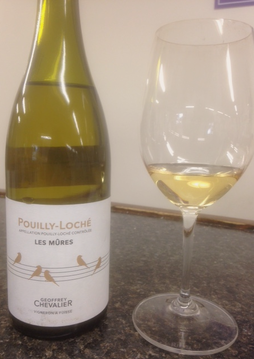 A little Black Friday respite from the early morning shopping sprees, either on-line or in person. Even if many of you may not have wine drinking on the mind right now while digesting yesterday's big meal, it never hurts to get a taste of something fun and new you may want to have later. Geoffrey is the 5th generation to work his family's lands in the Maconnais, and brings the experience of those before him into the modern world by using plow horses and organic/biodynamic methods whenever possible. While these style are becoming en vogue again, it is simply business as it has always been here. While Loche sits adjacent to the more famous area of Pouilly-Fuisse, the vineyards do not have the reputation of their neighbors, so the wines here can still deliver great relative value when made by the right hands. From a site on the highest elevation in Pouilly-Loche, the Les Mures vineyard has uniquely chalky soils and great sun exposure, which produces a wine that carries both weight and minerality. White stone fruit and lemon curd aromas show quickly from the first pour, evolving hints of orange and Mediterranean citrus as it opens up. On the palate the chalky soils come through surprisingly well, almost Chablis-like dusty texture that penetrates the palate while also showing nice richness from the extensive time on the lees. While wines from the Macon can frequently show a modern, tropical side that can get into the buttery realm, the minimalist style here shows nothing but natural vinous flavors This is a wine that begs for some rich fish or seafood dishes to marry up with the zesty palate. 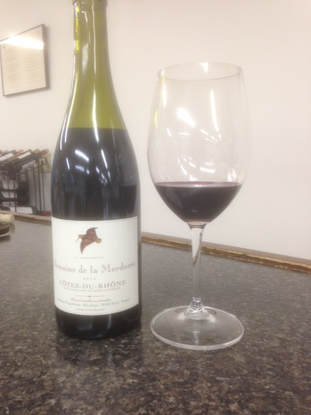 In great wine vintages, much of the hype and attention tends to get focused on the top end of the price spectrum where people look to grab the 'once in a lifetime' wines. At least until the next 'once in a lifetime' vintage inevitably comes along at some point in the next decade. Too much focus on the special occasion tenderloin, not enough focus on the delicious lesser cuts that will feed your soul on a weekly basis. With the great producers even their everyday wines reach great heights that can surpass other houses' Village designated efforts on their best days, and at a portion of the costs. The Wine Advocate once described Mordoree as "one of the world's great wine estates", always showing appreciation of their entire lineup, and with an importer in Virginia among the first to bring them into the United States, we have always had the benefit of first access and strong pricing. The 2016 vintage is already being heralded as yet another 'vintage of the century of the decade, and though it is sadly the first full vintage without founder Christophe Delorme at the helm, brother Fabrice has easily maintained their station at the top of the Rhone hierarchy. A traditionalist's type of Cotes du Rhone with healthy chunks of Grenache and Syrah measured with a good dollop of Carignan, the aromas are a mix of deep red fruits and musky Provencal herbs, more rugged than juicy on the nose and with no sign of alcoholic heat to be found. The palate is equal to the task as well, dark and fleshy but not hard edged, with just a touch of dusty cocoa tannins behind the currants and black cherry fruits. The higher end wines from Mordoree are built with more extraction and time in barrel for the most part to have a more extended life in the bottle, but this drinks nicely almost from the first pour, needing only a little bit of air to get the full compliment of aromatics rolling. A great match for hearty comfort foods on days like this when you may be iced or snowed in and barely want to leave the house. Except to buy wine for the holidays, of course. 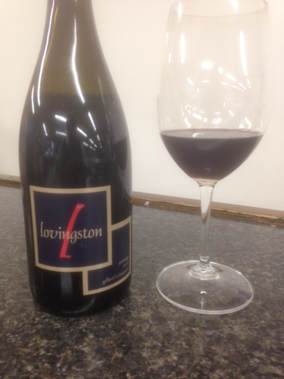 Certain grape varieties struggle in Virginia to ripen consistently and produce wine that's worth the blood, sweat, and tears put into them every vintage. Pinot Noir is one such grape, tricky to deal with even in the most hospitable growing regions where it has success, and downright devious everywhere else. It's a fragile grape that doesn't like extremes in heat and humidity, which as we all know Virginia experiences in spades seemingly every season. For those that like the silky polished texture of Pinot Noir, they might want to try what Lovingston Winery has figured out and plant more Pinotage. The hybrid grape is best known for production in South Africa, where it has become a staple in many regions. As a cross of Pinot Noir and Cinsaut, it takes on more of the rustic and gamey characters of the Cinsaut grape, but here in Virginia it assumes more of the Pinot Noir svelte textures, and the Cinsaut lineage makes it more durable to deal with our climate year after year. As their vineyard matures the wine has just moved from success to success, and 2016 is no different. Dark in color but more transparent ruby at the edges, the aromatics are full of dark spice and smokey cherry tones, taking the best aspects of both parent grapes. The first sip is where the great success appears for this wine, impressively polished with Burgundian style fine dark tannins and darkly spiced fruits similar to cool climate Oregonian wines. There is always a little touch of underlying savory notes that aren't quite Pinot-y to remind you it is a Pinotage you are drinking, but the elegance and refined character is SO impressive you will let it slide. This is excellent to take to family out of state over the holidays just to show off a side of Virginia wine that is rarely able to be captured. 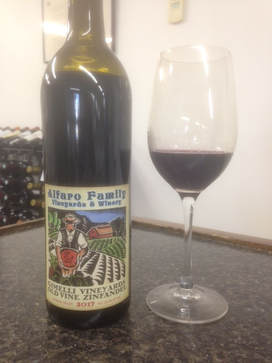 Zinfandel gained a reputation for making wines that are often ‘super-sized’, full of alcohol and jammy sweetness. The many grocery store labels aren’t doing the reputation any favors either, weighing in routinely at sugar levels 2-3X more than what usually constitutes a ‘dry wine’. Some of that is the nature of the grape, naturally large in size with a dark skin that does well in warm areas, so it can carry a lot of natural sugars when fully ripe. But nurture definitely pushed the grape to the extreme, allowing the grapes to hang longer as well as a lot of large commercial vineyards over-fertilizing to supercharge the growth rate. With more and more older vineyards being looked at more as natural treasures, their sustainability is more of a concern and we see many being converted to more natural or Organic procedures. The difference is striking in the wines, routinely seeing more of the wines land in the lower 14%abv range as well as finishing with a much drier mouthfeel. Producers like Alfaro Family, long time vineyard managers and winemakers in the Santa Cruz Mountains, have been well ahead of this trend and just waiting for everyone else to catch up. From the first pour, the inky dark Zin bursts with deep raspberry, purple flowers, and dark spices that fill the space around quite beautifully. What’s not there; heat, a heady aroma of booze, or sugary jellied fruits. The palate is even more impressive, backing the fruits with a hint of tart fruit skins and even acidity, making those blackberry tones taste right of the vine versus spread on your morning toast. There’s even a note of dusty tannins that show through on the finish, almost cranberry tart type sensation that lingers to the next sip. Extremely robust yet still very food friendly, this Zin comes from an era when the grape was enjoyed AT the table, not by putting you UNDER it. |
The Best of the Best.We offering free tastings on these wines in the store every Thursday and Friday, and a 10% discount off the retail price through the duration of the day. Come on by and give them a try! Archives
July 2024
Categories |
Location |
|

 RSS Feed
RSS Feed